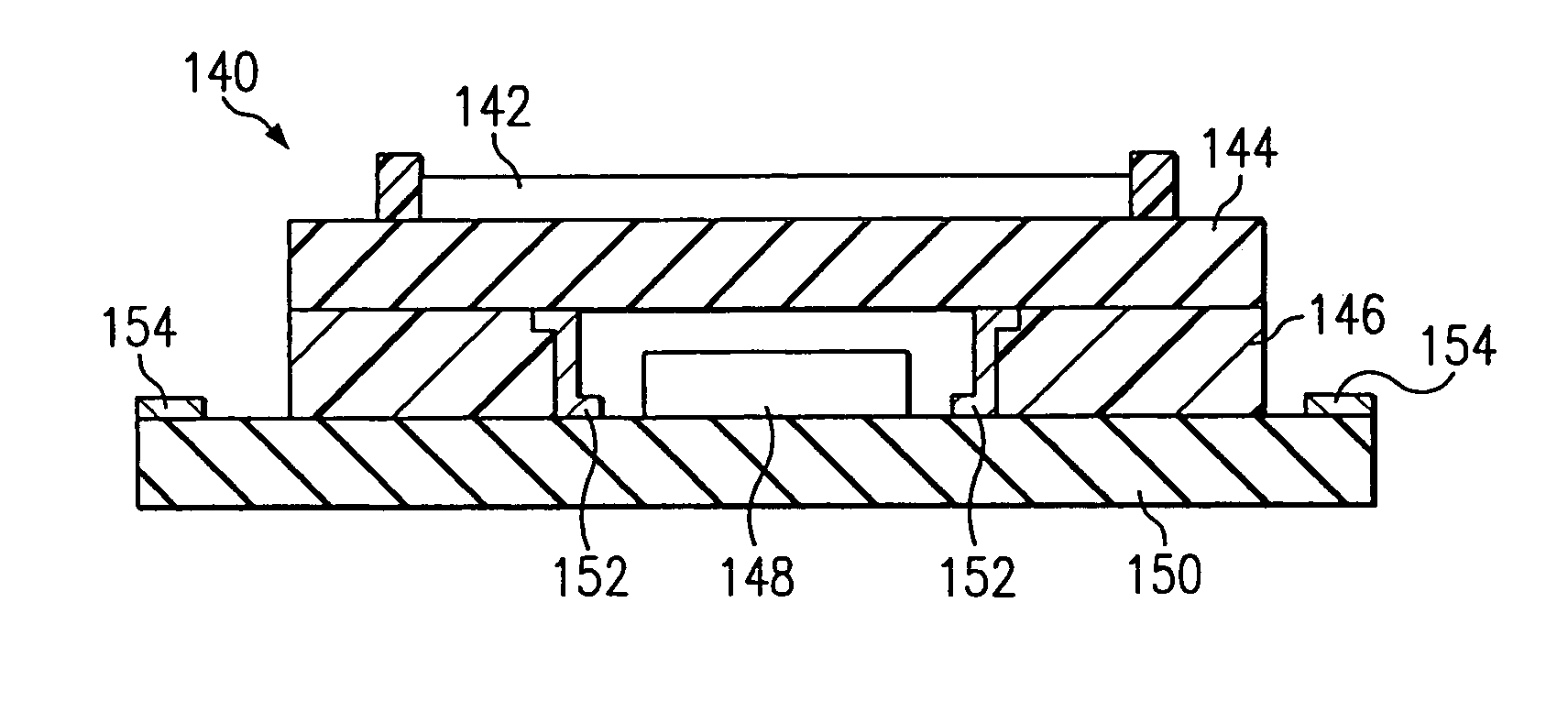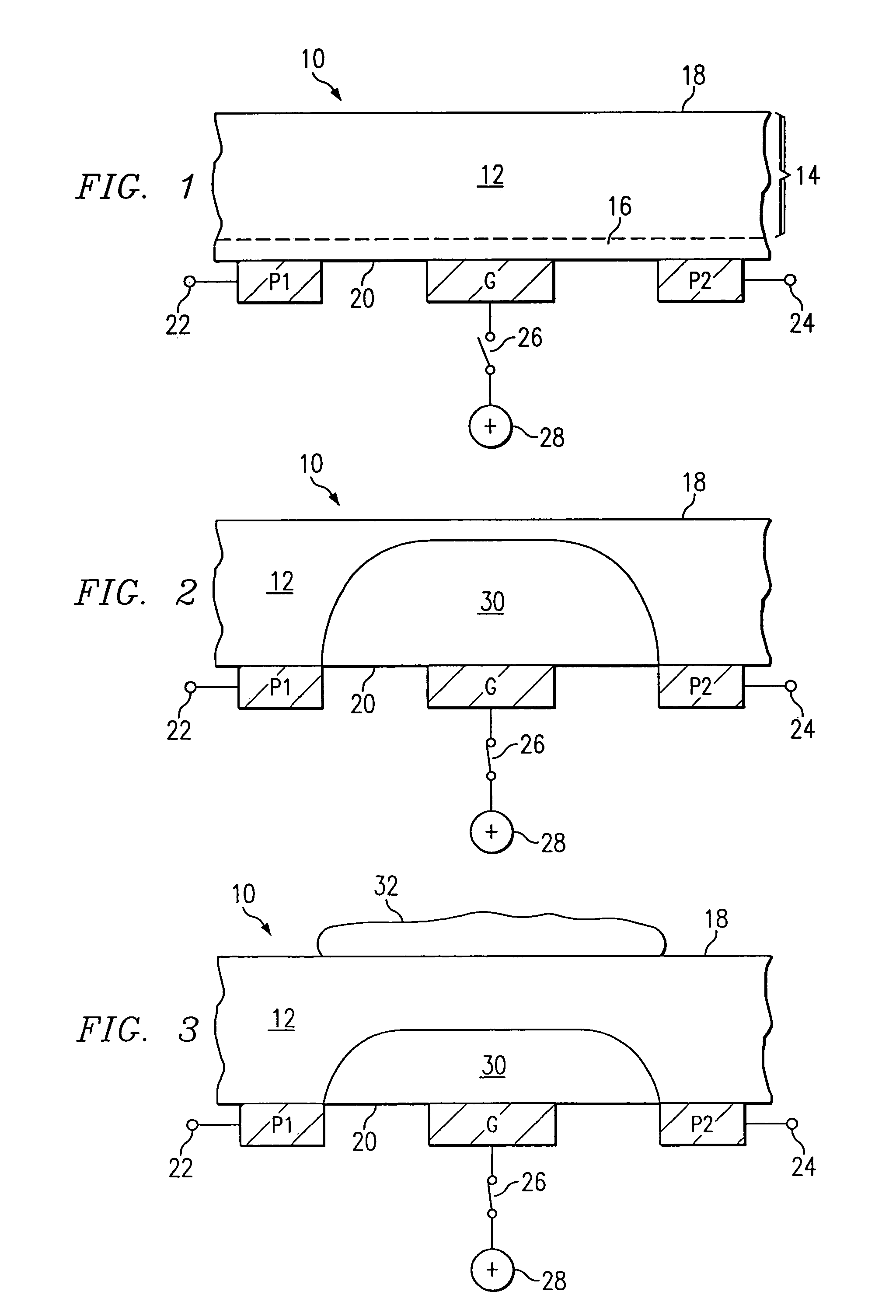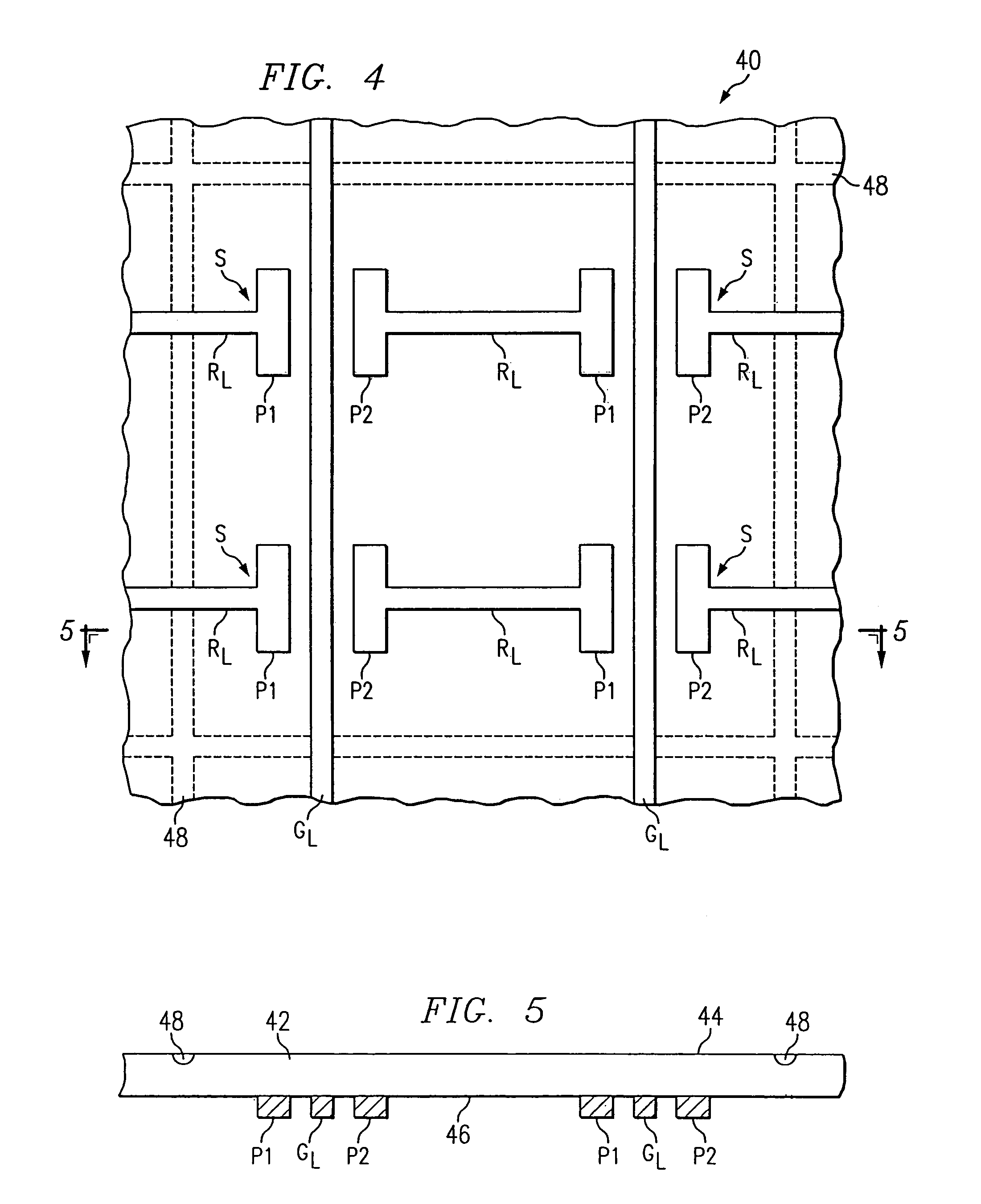Organic semiconductor sensor device
a sensor device and organic semiconductor technology, applied in thermoelectric devices, acquiring/reconfiguring fingerprints/palmprints, instruments, etc., can solve the problems of limited number of organic semiconductor materials that are n-type, limited the functionality of organic semiconductor devices, and limited practical applications
- Summary
- Abstract
- Description
- Claims
- Application Information
AI Technical Summary
Benefits of technology
Problems solved by technology
Method used
Image
Examples
Embodiment Construction
[0028]With reference to FIG. 1, a sensor element in accordance with the invention is designated generally by reference numeral 10. The sensor element 10 may have useful applications both as a single such element in a sensing device or as one of many such elements incorporated into an array forming part of a sensor device. The element 10 includes an organic semiconductor layer 12 that can comprise any suitable organic semiconductor material, such as pentacene, that can be prepared with regions of negative and / or positive mobile charges. In its simplest form, the organic semiconductor layer 12 can be chemically structured to provide a uniform distribution of positive majority mobile charge carriers when the layer 12 is in an unbiased state. The sensor element 10 can be constructed from organic semiconductor material having majority mobile charge carriers of either conductivity type. FIG. 1 shows an alternative having a non-uniform distribution of p-type conductivity material in which ...
PUM
| Property | Measurement | Unit |
|---|---|---|
| semiconductor | aaaaa | aaaaa |
| charge carriers | aaaaa | aaaaa |
| charge carrier mobilities | aaaaa | aaaaa |
Abstract
Description
Claims
Application Information
 Login to View More
Login to View More - R&D
- Intellectual Property
- Life Sciences
- Materials
- Tech Scout
- Unparalleled Data Quality
- Higher Quality Content
- 60% Fewer Hallucinations
Browse by: Latest US Patents, China's latest patents, Technical Efficacy Thesaurus, Application Domain, Technology Topic, Popular Technical Reports.
© 2025 PatSnap. All rights reserved.Legal|Privacy policy|Modern Slavery Act Transparency Statement|Sitemap|About US| Contact US: help@patsnap.com



